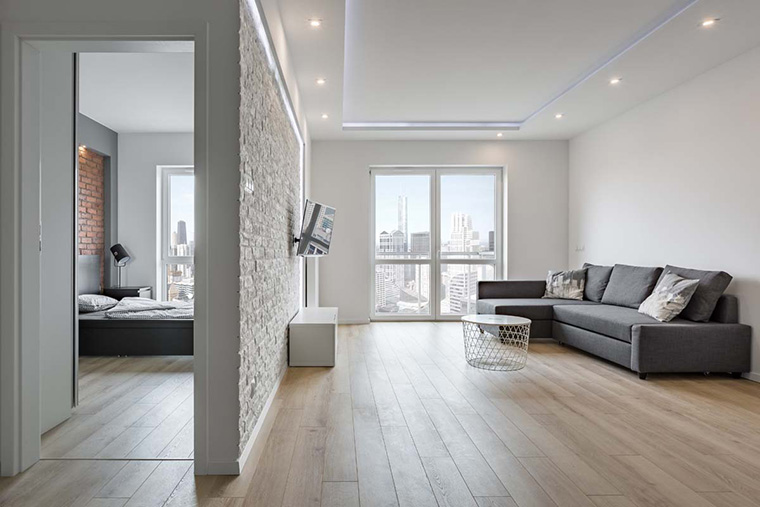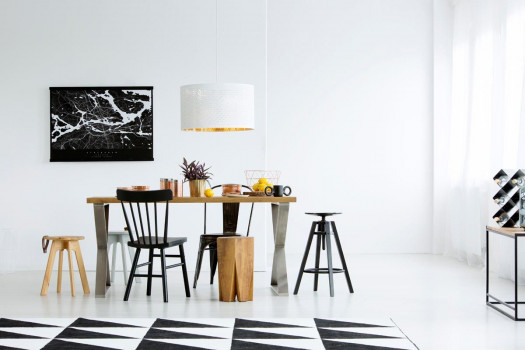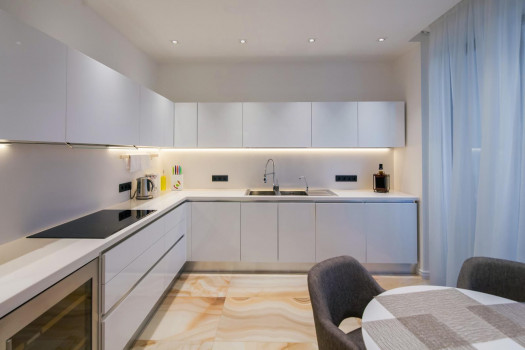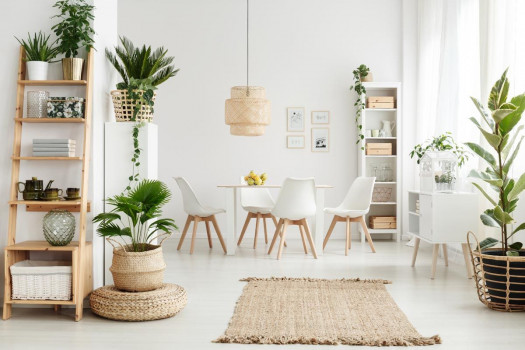Four Important Things to Know to Maintain Your Timber Floor




©Shutterstock
Timber flooring with its appealing colour and texture not only creates a pleasant impression but also feels good when we step on it barefoot. There is hardly anything else that can be equal to the warm impression of wood. Timber flooring, especially the solid ones, can bring out an exquisite ambience in your home.
There are various choices of timber floors available these days, not only solid wood, but also engineered ones like composite timber floors or laminated ones such as parquet. Unlike porcelain or ceramic tile floors, timber flooring needs more care. Wood as an organic material is more vulnerable to damage, although it has been processed using advanced technology. Therefore, here are some tips for its maintenance.
Moisture is Hardwood Floor’s Enemy
Timber flooring is generally made of hard wood like oak, maple, ebony, walnut or cherry. Although it is solid wood, make sure to keep it away from water or puddle. Hardwood floor should also be installed far from an area with high moisture.

©Shutterstock
If the floor is wet, clean the water spill immediately and let dry. Always keep a soft cloth around. The most effective cloth material to clean hardwood floors is microfiber, as it has soft texture that won’t damage the wood and it is also highly absorbent. Apart from that, complete your cleaning equipment with a vacuum cleaner and use the soft bristle/brush/nozzle.
Regular Recoating
Good timber flooring can last up to 20 years, or even more, with the right maintenance and dry surroundings. Cleaning the floor with a broom or a vacuum cleaner is not enough. It is necessary to recoat at least once every three months.

©Shutterstock
Coating is a process of applying sealer to the hardwood floor surface. It covers the pores on the wood to keep the material durable and look finer. There are water-based and oil-based sealers. The former dries easily and is suitable for expensive and exotic wood as it can accentuate the beauty of its texture and colour; the latter takes longer time to dry but can give a shiny effect on the wood and enables water-proofing.
Mopping Engineered Timber Floor
Engineered timber flooring like parquet requires more care, although it is also very long-lasting and firm. Its maintenance is basically similar to that of solid wood—by keeping it away from any liquid. If there’s any liquid pooling on the parquet, clean immediately and let it dry.

©Shutterstock
Just like maintaining hardwood floor, it is not necessary to mop parquet floor conventionally like mopping ceramic tile floor (by using a wet mop). Using a damp cloth to mop a parquet floor would be sufficient.
If you don’t have any parquet cleaner, you can make one yourself with the mixture of water and dishwashing liquid. The ratio is for every four cups of warm water, mix several drops of dishwashing liquid into it.
Dip the cloth and wring it—damp enough but not too wet. Use the cloth to mop or wipe the stain on the parquet. If you would like to mop the floor, make sure to do it per area. Finish in one area then move on to the next one.
Several Things to Avoid So That the Timber Floor Stays Perfect
You may have heard that a solution of baking soda and lemon juice or vinegar can be an alternative to clean timber floors, but you should avoid using this solution especially in a large quantity because the acidity can damage timber floor’s sealer coating.
Do not use an abrasive cleaning product that contains alkaline or ammonia as it can reduce the glossiness or even cause some scratches. Avoid steam cleaning too because it is only suitable for vinyl, linoleum, or ceramic tiles floors—not timber floor.

©Shutterstock
Do not use furniture cleaning spray or oil to clean timber floor because they can make surfaces slippery. Avoid using wax as its application takes time and can complicate recoating process. Lastly, avoid cleaning timber floor with conventional abrasive housekeeping tools and hard brushes because they can damage coating.




 Indonesia
Indonesia
 Australia
Australia
 New Zealand
New Zealand
 Philippines
Philippines
 Hongkong
Hongkong
 Singapore
Singapore







